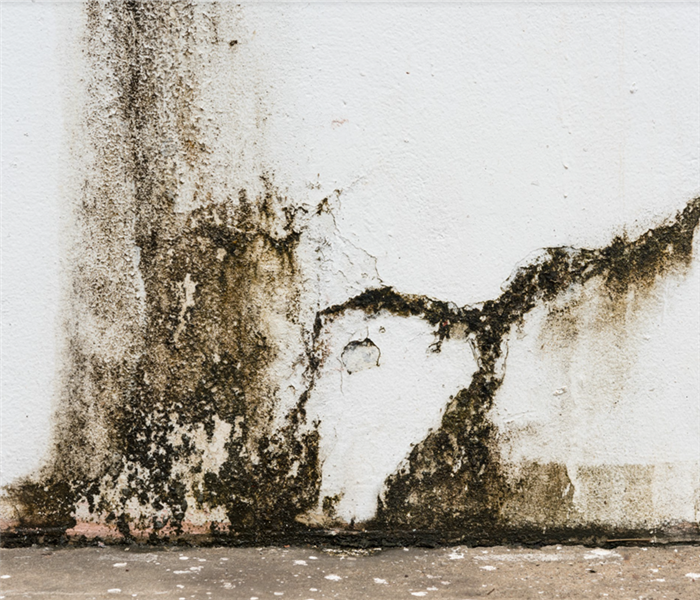How To Handle Residential Mold Growth
6/18/2021 (Permalink)
Mold is a sneaky, silent form of fungus that can grow anywhere at any time. The introduction of a water source can cause mold to multiply exponentially and spread rapidly throughout your home. If you have recently experienced a leak in your roof or your plumbing, it is essential to take proper precautions to prevent excessive damage to your property. Read on to learn more about mold growth and what to do if you suspect signs of a problem in your home.
What Is Mold?
Mold originates in the form of tiny, microscopic spores that are omnipresent. These spores can enter your home in various ways:
- Through open windows and doors
- Via your air conditioning unit
- By attaching to your clothing or pet hair
Mold spores thrive in high humidity, and they have the potential to colonize when exposed to water. Therefore, it is crucial to investigate and repair household leaks and water damage before the mold growth becomes unmanageable.
What Should You Do While Waiting for Help?
Mold remediation specialists are available to assist in the event of an uncontrollable household mold problem. While waiting for them to arrive, steer clear of the infested areas, and turn off all cooling and heating systems. Further, turn off any water sources that could be contributing to leaks.
What Should You Not Do?
While waiting for professionals in North Port, FL, to assess your damage, never attempt to move or clean the mold. Household cleaners and bleach only exacerbate the problem. Further, don't try to blow the mold away with air or blot it with a towel. Leaving the mold in its present condition will allow the specialists to best treat it effectively and efficiently.
Mold growth, while stubborn and troublesome, can be remediated and restored by professionals. Following proper mold protocols will allow specialists to eradicate your home, leaving it clean and mold-free.




 24/7 Emergency Service
24/7 Emergency Service
